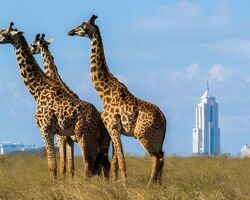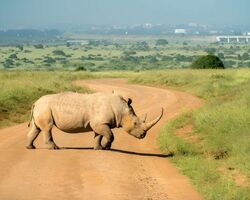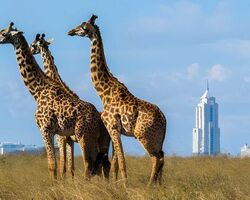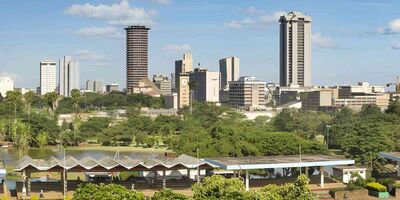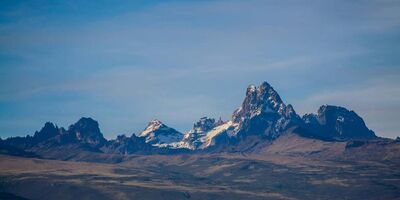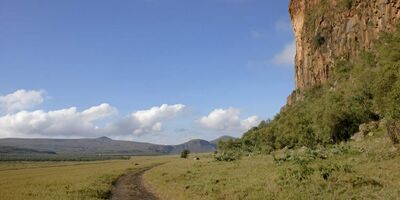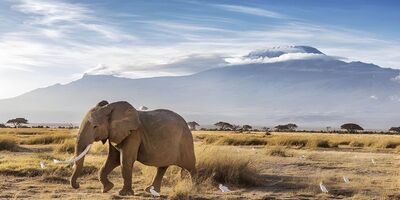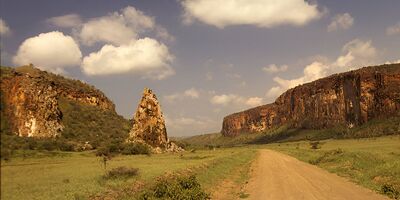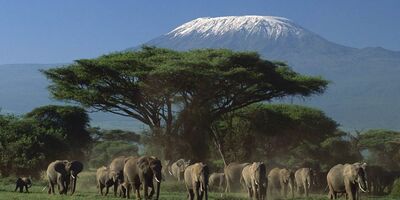Nairobi National Park , Nairobi
About Nairobi National Park
Nairobi National Park is a unique wildlife reserve located just a few kilometers from Nairobi’s bustling city center. Established in 1946, it was Kenya’s first national park and remains one of the most accessible safari experiences in the world. The park spans over 117 square kilometers and is renowned for its diverse ecosystems, which include open grass plains, riverine forests, rocky valleys, and wetlands.
This juxtaposition of urban and natural environments makes Nairobi National Park a must-visit destination for tourists and locals alike. Here, you can witness a variety of wildlife, including the Big Four (excluding elephants) against the backdrop of the city’s skyline—a surreal experience that’s hard to find anywhere else.
Getting to Nairobi National Park
Nairobi National Park is located approximately 7 kilometers from Nairobi’s Central Business District (CBD). The park is easily accessible by road, and you can reach it within 30 minutes from most parts of the city, depending on traffic.
By Car: Visitors can drive themselves to the park using private or rental vehicles. The main entrance is located along Langata Road, and there is ample parking available. If you're driving, be sure to carry a map or use GPS navigation to explore the park's numerous trails.
By Public Transport: Matatus (shared minibusses) and buses operate from various parts of Nairobi to Langata Road, where you can take a short taxi ride to the park entrance. However, public transport may not be the most convenient option if you're carrying heavy gear or traveling with a group.
By Taxi or Ride-Sharing: Taxi services and ride-sharing apps like Uber and Bolt are readily available in Nairobi and provide a comfortable and direct route to the park.
Tour Packages: Many tour operators in Nairobi offer guided tours to Nairobi National Park, which often include transportation, park entry fees, and game drives. This option is ideal for first-time visitors or those looking for a hassle-free experience.
Best Time to Visit Nairobi National Park
Nairobi National Park is a year-round destination, but the best time to visit depends on your wildlife viewing preferences.
Dry Season (July to October): This period is the most popular time to visit the park. The dry season brings lower vegetation and fewer water sources, making it easier to spot wildlife congregating around the remaining waterholes. The weather is also pleasant, with cooler temperatures and clear skies.
Wet Season (November to May): The wet season, particularly between March and May, sees the park transform into a lush green landscape. While wildlife may be more dispersed due to the abundance of water, this is the best time for birdwatching as migratory species arrive. The park is less crowded during this period, offering a more serene experience.
Special Considerations: Nairobi National Park can be visited early in the morning or late in the afternoon when animals are most active. Arriving at sunrise or staying until sunset increases your chances of spotting predators like lions and hyenas.
Top Attractions and Activities in Nairobi National Park
1. Game Drives Game drives are the highlight of any visit to Nairobi National Park. Whether you’re on a self-drive or guided tour, the park’s well-maintained roads allow you to explore its diverse habitats. Keep an eye out for lions, cheetahs, leopards, buffalo, giraffes, zebras, and a variety of antelope species. The park is also a sanctuary for the endangered black rhino, making it one of the best places to see these magnificent creatures in the wild.
2. Ivory Burning Site The Ivory Burning Site is a significant historical landmark within the park. It marks the spot where, in 1989, Kenya’s then-President Daniel arap Moi set fire to 12 tons of ivory, a symbolic act in the fight against poaching. The site has since been preserved as a reminder of Kenya’s commitment to wildlife conservation.
3. Nairobi Safari Walk Located at the main entrance, the Nairobi Safari Walk is an educational facility that provides visitors with a preview of what to expect in the park. The raised boardwalk takes you through different ecosystems and offers close-up views of animals like lions, rhinos, and leopards. The Safari Walk is ideal for those who may not have time for a full game drive but still want to experience Kenya’s wildlife.
4. Animal Orphanage Adjacent to the Nairobi Safari Walk is the Nairobi Animal Orphanage, a rehabilitation center for injured and orphaned animals. The orphanage offers visitors the chance to see wildlife such as cheetahs, leopards, and primates in a more controlled environment. It’s a great place to learn about the conservation efforts being made to protect Kenya’s wildlife.
5. Birdwatching Nairobi National Park is a birdwatcher’s paradise, with over 400 species recorded. The park’s varied habitats, including wetlands, grasslands, and forests, provide a haven for both resident and migratory birds. Some of the notable species include the Secretary Bird, Martial Eagle, and the African Fish Eagle. The wet season is particularly good for birdwatching, as many migratory species arrive in the park.
6. Walking Safaris For those who prefer a more intimate experience with nature, walking safaris are available in designated areas of the park. Accompanied by a ranger, you can explore the park on foot, learning about its flora and fauna while experiencing the thrill of being in the wild.
7. Picnic Sites Nairobi National Park has several picnic sites where visitors can relax and enjoy a meal amidst nature. The Kingfisher and Impala picnic sites are popular, offering scenic views and basic amenities such as tables, benches, and restrooms. Picnicking is a great way to unwind after a morning of wildlife viewing.
Wildlife Conservation Efforts
Nairobi National Park plays a crucial role in Kenya’s wildlife conservation efforts. The park is home to the Nairobi Animal Orphanage and the David Sheldrick Wildlife Trust, both of which focus on rehabilitating and reintroducing orphaned animals into the wild.
The park’s proximity to the city presents unique challenges, such as human-wildlife conflict and habitat encroachment. However, ongoing conservation programs aim to protect the park’s biodiversity while balancing the needs of Nairobi’s growing population. Visitors are encouraged to support these efforts by adhering to park regulations, such as not littering, keeping a safe distance from wildlife, and respecting the park’s flora and fauna.
Travel Tips for Nairobi National Park
1. Park Entry Fees Nairobi National Park charges an entry fee for both residents and non-residents. As of 2024, the fees are as follows:
- Non-resident adults: $43 USD
- Non-resident children: $22 USD
- Resident adults: KSH 430
- Resident children: KSH 215 Fees are subject to change, so it’s advisable to check the Kenya Wildlife Service (KWS) website for the latest information.
2. What to Pack
- Binoculars: Essential for wildlife spotting, especially for birds and distant animals.
- Camera: A good quality camera with a zoom lens is recommended for capturing wildlife.
- Clothing: Light, neutral-colored clothing is best for game drives. Don’t forget a hat, sunglasses, and sunscreen to protect yourself from the sun.
- Snacks and Water: There are limited food options within the park, so it’s advisable to carry your own snacks and water.
3. Safety Precautions
- Stay in Your Vehicle: While on a game drive, always stay in your vehicle unless in designated areas. Wild animals can be unpredictable.
- Respect Wildlife: Do not feed or disturb the animals. Maintain a safe distance, and keep noise levels to a minimum.
- Follow Park Rules: Adhere to all park regulations, including speed limits and designated driving paths.
Nairobi National Park offers a unique blend of wildlife and urban landscapes, making it a top destination for nature lovers and adventure seekers. Whether you’re on a short layover or a long stay in Nairobi, this park provides an unforgettable safari experience without the need to travel far from the city.
From thrilling game drives to serene picnics, Nairobi National Park has something for everyone. So pack your camera, bring your binoculars, and get ready to explore Kenya’s urban wilderness—a true gem in the heart of Nairobi.
3 Tours & Activities in Nairobi National Park
See All Nairobi National Park ToursLocation & Places to Visit on Nairobi National Park Map
View destinations and attractions nearby Nairobi National Park, on an interactive map.
Freedom to make your own trip!
What you want, when you want and how you want.



